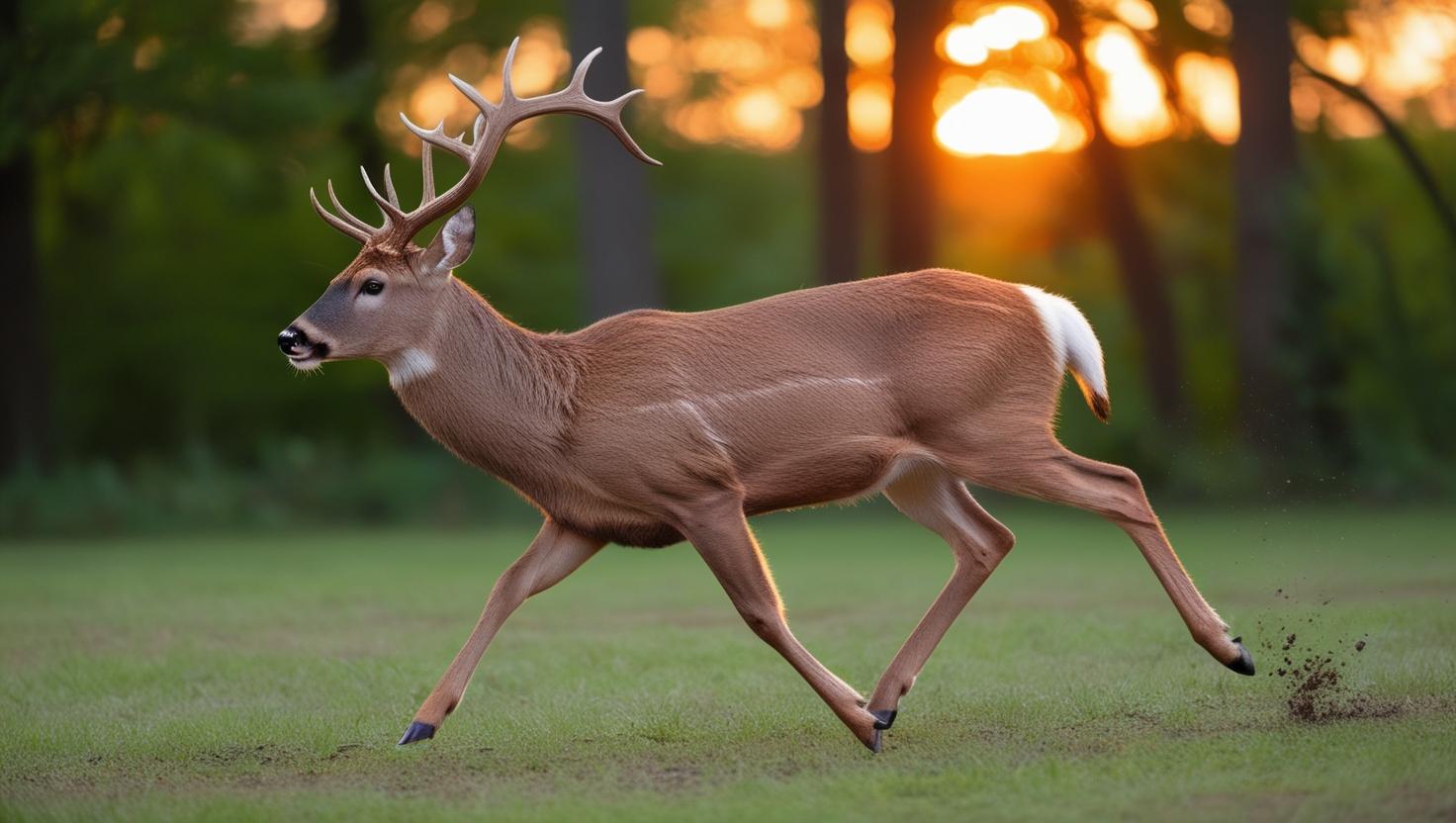Deer are fascinating creatures, admired for their majestic antlers, which they shed and regrow each year. But have you ever noticed that deer often exhibit erratic behavior, such as running or jumping, after shedding their antlers? This phenomenon has puzzled many wildlife enthusiasts and researchers alike.
In this article, we’ll explore the reasons behind this behavior, examining the physical, physiological, and instinctual factors at play. We’ll also address five frequently asked questions related to deer and antler shedding to provide a comprehensive understanding.
The Shedding Process: A Natural Cycle
Deer shed their antlers annually, usually during late winter or early spring. This process is influenced by hormonal changes triggered by decreasing levels of testosterone. Once the breeding season ends, testosterone levels drop, causing the bone at the base of the antlers (the pedicle) to weaken. Eventually, the antlers fall off, making room for new growth.
While this process is natural, it often leaves deer feeling lighter and more mobile, which may explain their sudden bursts of energy. Let’s take a deeper look into why deer run after shedding their antlers.
1. Physical Relief and Energy Release
Antlers are heavy structures, weighing up to 10-15 pounds in some species. Carrying this weight for months, especially during the rut (breeding season), can put considerable strain on a deer’s neck and shoulders. When the antlers finally shed, deer experience a sense of physical relief, which may result in bursts of energy and movement.
Running or jumping could simply be a way for the deer to celebrate their newfound freedom and mobility. Similar to humans stretching after sitting for long periods, this behavior helps them relax and release pent-up tension.
2. Hormonal Changes and Endorphin Rush
The process of shedding antlers is associated with hormonal shifts, particularly a drop in testosterone. These changes can trigger the release of endorphins, natural chemicals in the body that relieve pain and create feelings of euphoria.
Deer may experience a natural “high” from this endorphin release, leading to playful or erratic behavior. The combination of physical and hormonal relief might make them feel energized and more active.
3. Instinctive Response to Noise or Sensation
The actual shedding of antlers can be sudden and even noisy, especially if they fall onto hard ground or rocks. This noise may startle the deer, causing them to flee instinctively. Additionally, the sensation of the antlers detaching may feel unfamiliar or uncomfortable, triggering a fight-or-flight response.
Deer are prey animals, highly attuned to their surroundings. Any sudden sensation, even if harmless, can provoke an immediate reaction, leading to running or jumping.
4. Territorial and Social Behavior
For male deer, shedding antlers marks the end of the breeding season and the beginning of a new cycle. This period often involves reorganizing dominance hierarchies within the herd. Younger bucks may see antlerless males as less dominant, prompting challenges or playful chases.
Running or sparring behavior might also be part of territorial displays as deer prepare for the regrowth of their antlers and the next mating season.
5. Healing and Regrowth Process
After shedding, the pedicle (the base where antlers attach) remains exposed. While this area heals quickly, it can be sensitive during the early stages of regrowth. Deer may feel discomfort or itchiness, prompting erratic movements to relieve irritation.
Running and jumping could help stimulate blood flow to the pedicle area, speeding up the healing process and the growth of new antlers.
5 Frequently Asked Questions Answered
1. Do deer feel pain when shedding antlers?
No, deer do not feel pain when shedding antlers because the tissue at the base of the antler (the pedicle) naturally weakens and separates. However, slight irritation or tingling may occur as new antlers begin to grow.
2. Why do deer shed their antlers every year?
Deer shed their antlers annually to prepare for the next breeding season. Antlers are used as tools for dominance and mating displays. Shedding and regrowing antlers ensure they are in peak condition for competition.
3. How quickly do deer regrow antlers?
Deer begin regrowing their antlers almost immediately after shedding. The process typically takes 3 to 5 months, with the fastest growth occurring in spring and summer due to higher nutrient availability.
4. Can you find shed antlers in the wild?
Yes, antler sheds can be found in areas where deer frequent, such as trails, bedding areas, and feeding zones. Shed hunting has become a popular hobby for outdoor enthusiasts.
5. Are antlers and horns the same?
No, antlers and horns are different. Antlers are made of bone, grow annually, and are shed and regrown each year. Horns, found on animals like goats and bison, are permanent structures made of keratin and do not shed.
Final Thoughts
The behavior of deer running after shedding their antlers is a fascinating combination of physical relief, hormonal changes, and instinctive reactions. While it may seem unusual, this behavior is completely natural and plays a role in their survival and renewal cycle.
Understanding the science behind antler shedding not only deepens our appreciation for these animals but also highlights the complexities of nature. Whether you’re a wildlife enthusiast, a hunter, or simply curious, observing this process offers a glimpse into one of nature’s most remarkable transformations.
A Deeper Dive into Deer Behavior
The sight of a deer sprinting through a field after shedding its antlers is a reminder of the intricate connections between animal behavior, physiology, and the environment. While we have some understanding of the factors at play, much remains to be explored. Future research, incorporating GPS tracking, hormonal analysis, and behavioral observation, could shed more light on this fascinating phenomenon. Until then, we can continue to marvel at the mysteries of the natural world and the enigmatic behavior of these magnificent creatures.
Like learning about wildlife? Share this article and keep exploring the wonders of nature! 🦌🌿 #DeerFacts #AntlerShedding #WildlifeMysteries #NatureLovers #AnimalBehavior

